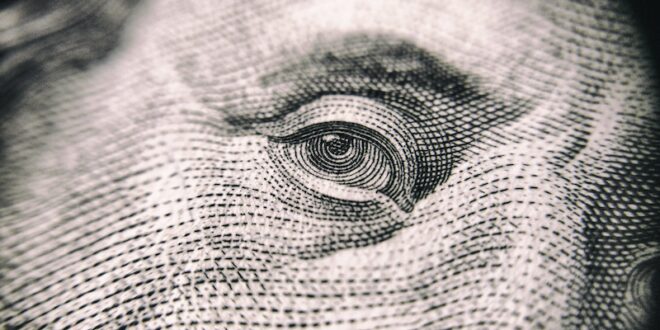Russia’s isolation, China’s assertiveness and a surge of interest in joining BRICS have pushed calls for a BRICS currency.
Brazilian President Lula da Silva attacked the global economic order at last month’s international financing summit in Paris, criticising the dominance of the United States (US) dollar as the currency for international trade. He earlier proposed a euro-like BRICS currency as an alternative, and suggested this be discussed at next month’s BRICS summit in South Africa.
Russia seems to be the BRICS member most in favour, not surprisingly, since it has largely been cut off from dealing in the dollar by US sanctions imposed on it because of its invasion of Ukraine. But is a BRICS currency realistic?
Aly-Khan Satchu, Rich Management Chief Executive Officer, thinks so. ‘The catalyst for the move to find an alternative to the dollar was the sanction of Russia’s dollar forex reserves. This kneejerk response by the US signalled worldwide that dollar reserves are held at the whim and diktat of US authorities.’
He sees a need to wrestle sovereignty away from the dollar and the US towards BRICS. ‘We have already seen increased settlements in local currencies like [India’s] rupee, the Chinese yuan, and the United Arab Emirates dinar. We are seeing shifts away from the petrodollar architecture. Russia and India are now pricing oil via the Dubai benchmark.’
China doesn’t meet most of the technical requirements to make the yuan a reserve currency
But is it feasible to create a common currency across five nations spread around the globe?
Satchu believes so. ‘I think the proposal is that the currency will be valued on a basket of physical commodities which is sounder than the current dollar regime where the printer is controlled by the US. I foresee the currency beginning as a currency for trade exchange, allowing local BRICS countries to retain their own currencies for purposes of monetary policy management.’
Satchu doesn’t think the major disparities among the BRICS economies and currencies would make it impossible to create a common currency. ‘Unlike the euro, I don’t foresee one size fitting all, but the BRICS currency being used as a means of exchange outside the dollar system.’
Not everyone agrees. Iraj Abedian, Pan-African Investment and Research Services Chief Executive, sees the push for a BRICS currency as a largely political move by China to assert itself in the world, believing such a currency would primarily be based on China’s yuan. But China doesn’t meet most of the technical requirements to make the yuan a reserve currency, he notes. Its banking system and financial markets aren’t stable, well-regulated, transparent or credible enough globally.
Abedian also believes the BRICS economies lack the diversity needed to sustain a joint currency. ‘There isn’t sufficient bilateral flow. Russia will sell oil and gas to China and nothing else.’ Three BRICS members – Russia, Brazil and South Africa – are all basically commodity exporters with little potential for intra-bloc trade.
Currency swapping in BRICS requires the economies of each side to be roughly balanced
Donald MacKay, Head of XA Global Trade Advisers, believes the ‘endless chatter around a BRICS currency is nothing more than a fever dream.’ He says in 2013, China and India signed a currency swap agreement, allowing them to exchange yuan for rupees and vice versa.
‘In 2015, China exported US$1 billion worth of goods to India, but then refused to take the yuan as payment, instead wanting to keep the money in India, to help finance Chinese investments in India. If this couldn’t work, there’s no reason to think it could work on a larger scale.’
He believes the 2013 deal exposed the limitations of currency swapping in BRICS, which requires the economies of each side to be roughly balanced. If not, a larger, more universal currency is needed to provide liquidity so the participating economies don’t have to be perfectly balanced.
Jim O’Neill provides a useful perspective. He was a Goldman Sachs analyst in 2001 when he coined the acronym ‘BRICs’ (with a small s, then including Brazil, Russia, India and China; South Africa joined later). In April he addressed the ‘renewed chatter’ about threats to the global primacy of the US dollar.
O’Neill believes if the US stops being the world’s largest economy, the dollar’s dominance would be questioned – as the British pound was during the first half of the 20th century. This would not necessarily be bad for the US, given all the added responsibilities of issuing the world’s main reserve currency.
The BRICS New Development Bank aims to reach 30% of lending in local currencies in five years
However he concedes it’s ‘not optimal’ for everyone else’s currencies, monetary policies and trade patterns to be so dependent on the American monetary system and the Federal Reserve’s domestically driven priorities.
But a ‘US-excluding group of emerging powers [with] higher aspirations for itself does not necessarily mean anything for the US-centred financial system. Crucially, the group’s most important economies are China and India, bitter adversaries that rarely cooperate on anything.’ Until that changes, O’Neill thinks it’s fanciful to believe that BRICS, or an expanded grouping, ‘could mount any serious challenge to the dollar.’
‘[M]ost importantly, for any BRICS (or BRICS-Plus) member to pose a strategic challenge to the dollar, it would have to permit – indeed encourage – foreign and domestic savers and investors to decide for themselves when to buy or sell assets denominated in its currency. That means no capital controls of the kind that China has routinely deployed. Until the BRICS and potential BRICS-Plus countries can find a credible alternative to the dollar for their own savings, the greenback’s dominance will not really be in doubt.’
Jakkie Cilliers, Head of African Futures and Innovation at the Institute for Security Studies, believes China’s capacity to play this global role has been diminished by President Xi Jinping’s centralisation of power. ‘So the future is a steady decline in the importance of the dollar in favour of a more complex and less unipolar system, with a rise in the euro (the European Union economy is larger than the US economy) and the yuan, among others, but no single replacement of the dollar.’
Though South Africa’s President Cyril Ramaphosa assured Lula that a BRICS currency would be discussed at next month’s summit, Anil Sooklal, South Africa’s BRICS sherpa, said it wouldn’t. He told Daily Maverick in May: ‘What we have is an interbank agreement to trade in local currency. That’s a framework agreement that we haven’t activated. So now there is serious talk about activating it.’
BRICS countries have already started moving in that direction. The BRICS New Development Bank has begun lending in local currencies and aims to reach 30% of lending in local currencies in five years. The bank was also exploring borrowing in local currencies, and individual BRICS countries were starting to trade in each other’s currencies, Sooklal said.
That’s a long way to a BRICS currency, though. Pressure from Russia, looking to escape sanctions, and perhaps China looking for a larger global role, not to mention Brazil’s Lula, could drive a push for a BRICS currency. But it’s too soon to put the greenback on the endangered list.
 Eurasia Press & News
Eurasia Press & News




